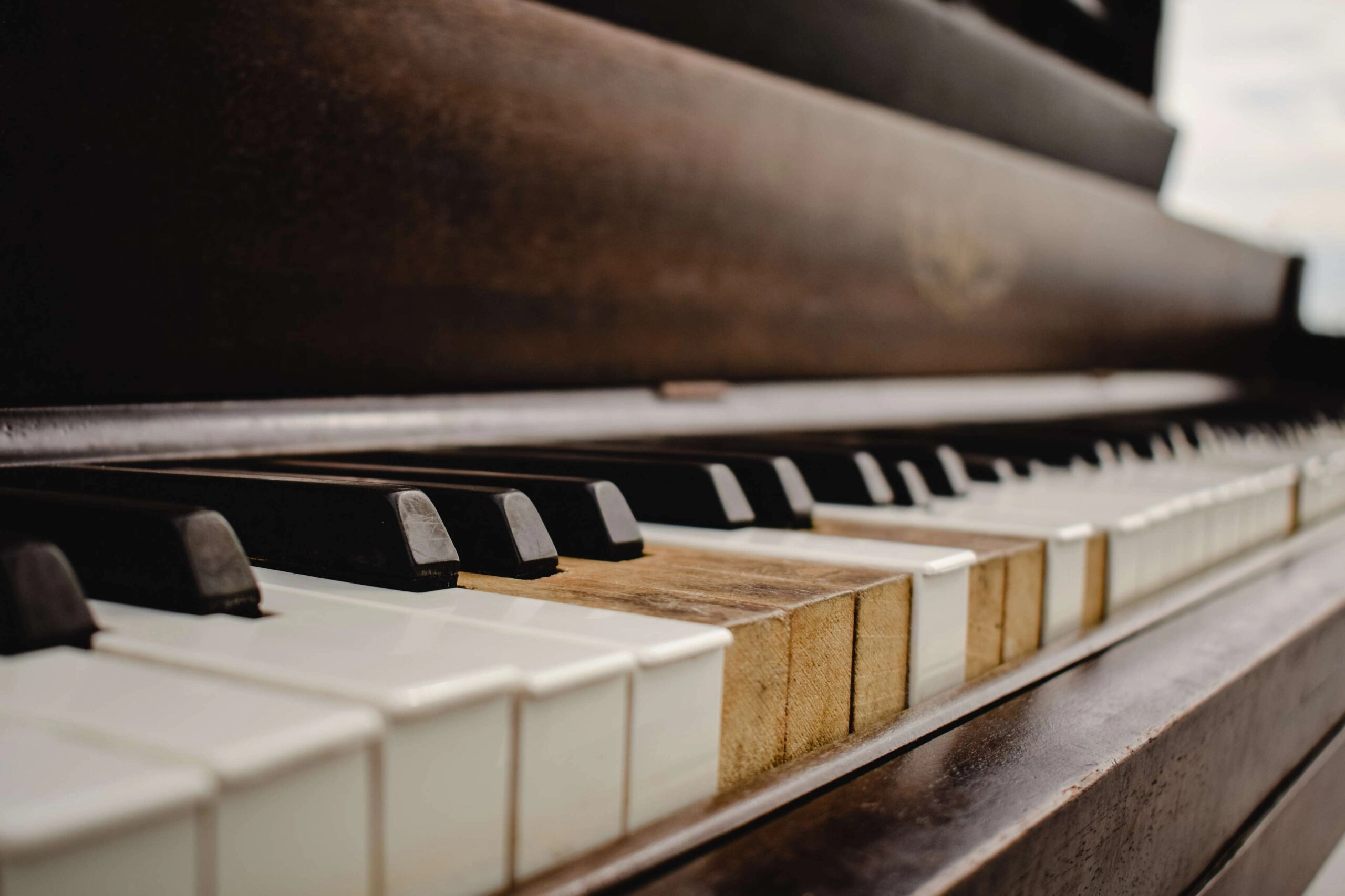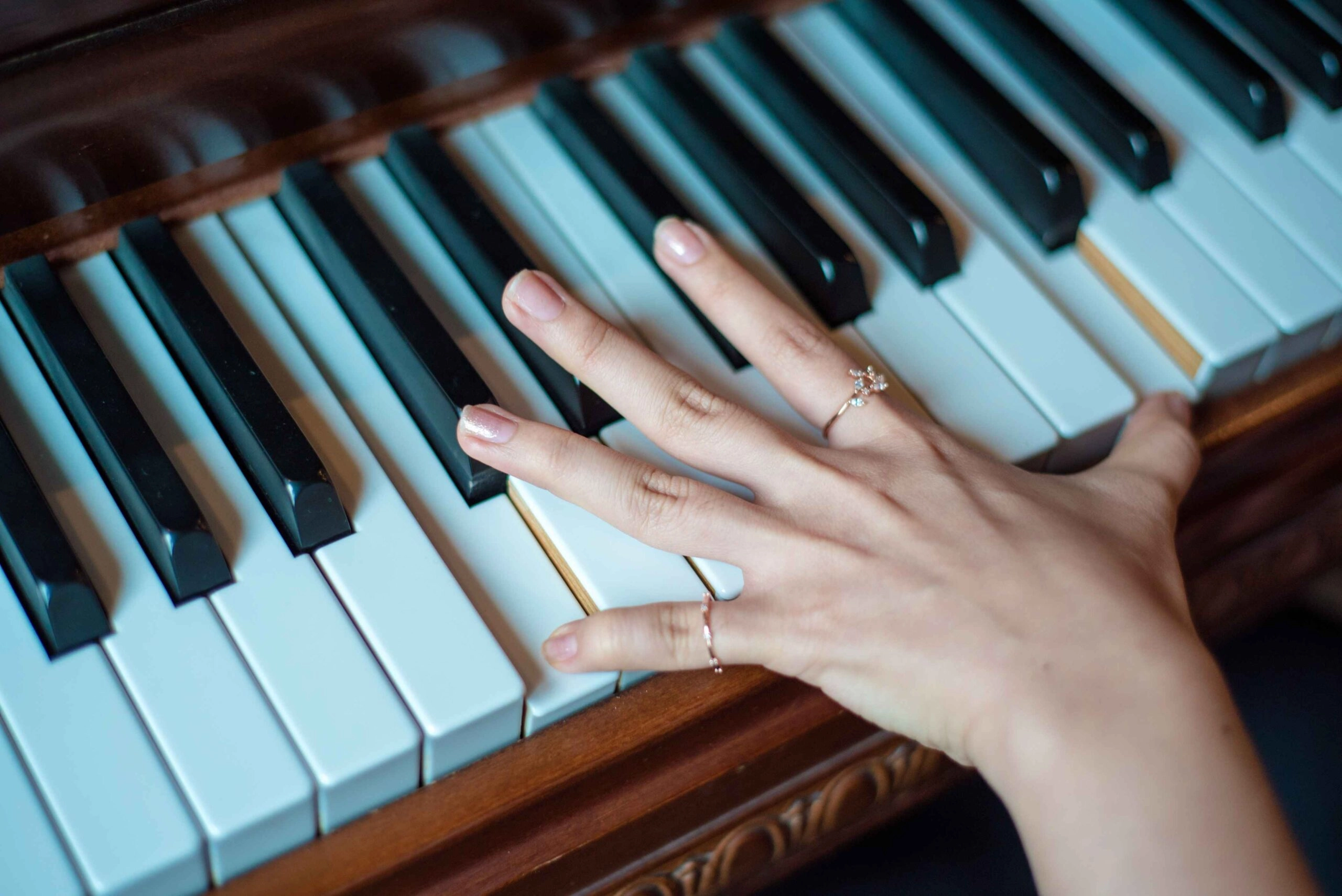"There are eighty-eight keys on a piano and within that, an entire universe." ― James Rhodes. Indeed, the piano carries an entire world within. The mere touch and feel of the small white and black piano keys can make our hearts filled with joy.
Has it ever occurred to you what piano keys are made of? Well, enough of playing; for now, let's take a break and dive through the history of piano to find out the amazing and vast history of piano keys.
History of Piano Keys
The history of pianos, more specifically, the history of piano keys, is as interesting as the music it produces.
Nowadays, piano manufacturers use various kinds of materials to make the piano keys, but there were not many options for them in the early times.

Did you know that the first piano keys were entirely made of wood? Well, it seems intriguing how many times it has changed its course since then.
1. Early Piano Keys
The first proven record of the predecessor of modern-day pianos dates back to the early decade of the eighteenth century.
In around 1700, an Italian instrument maker Bartolomeo Cristofori created the first modern piano, AKA pianoforte.

Although pianofortes were similar to their early predecessor harpsichords in terms of appearance, the construction, tones, and keys were poles apart.
Originally, the keys were made of wood of different colors to identify the 'white' and 'black' keys.
2. Introduction of Ivory
Keys Soon after the invention of modern-day pianos, manufacturers started using ivory to make white keys on pianos.
You must be wondering what is ivory? Well, ivory is a solid, white-colored material (consists of mostly dentine), usually derived from Elephant tusks or Rhino horns.
3. Specification of Ivory keys
Ivory might seem like a smooth surface, but it actually comes with a fingerprint-like pattern. Unlike other piano keys, ivory-made keys are not solid pieces.
Every ivory piano key is made of three different parts finely joined together. Ivory keys are slightly textured, unlike plastic piano keys in texture. Lastly, ivory is porous, so keys made of ivory tend to get yellowish with time.
How to Distinguish Ivory Keys?
A seasoned pianist can usually tell within seconds if a piano key is made of ivory. But if you’re not that experienced, don’t worry—you can still use a few simple tricks to figure it out yourself.
1. Color
What philosophers often say, I will say it to you now; observe! Jokes apart, you can easily tell whether your piano keys are made of ivory or not by looking at the color and texture.
The rule of thumb: the older it is, the darker it gets. Ivory naturally changes its color with time from white-yellow to slightly pale yellow. On the other hand, plastic keys remain the same over time.

2. Use a Needle
This is one of the most reliable techniques to judge whether your piano keys are made of ivory or not. In fact, people in earlier times used this method while buying a piano.
Take a needle with a sharp point, place it over a flame, and press it on a key. If the needle manages to make a tiny hole in the keys, then it is not ivory. Ivory is tough and highly heat-resistant.
3. UV Method
This is also a simple and quick experiment. Arrange an Ultraviolet torch and flash it on the keys. If the keys reflect violet-blue or bright white color, be sure that the keys are made of ivory. Plastic keys absorb the UV rays, so you won't see any reflection.
4. Keys Construction As
I have already said, ivory keys are made of three different ivory pieces joined together. Examine with the tip of your finger or fingernails and look for two fine lines that join a key together.
Also, ivory may look smooth from a distance, but it comes with a fingerprint-like pattern and coarse surface. So, it is easily recognizable by a magnifying glass.
Are Ivory Piano keys Banned?
Pianos became extremely popular among music enthusiasts in the early 1900s. It led to an increased demand for ivory for the production of keys. Ivory became so popular that it indirectly encouraged poaching, specifically Elephants and Rhinos.
This practice, unfortunately, led to a sudden decrease in the population of these species. According to a shocking report dating back to the 1970s, 17,000 Elephants were being poached every year.
To save these species from extinction and to withhold the humanitarian causes, a global treaty was signed among countries, putting a complete ban on any trade-related to Elephant ivory.
As a result, ivory not only became unavailable as per the demand, but it also became expensive. This treaty led piano manufacturers to think of any other material for making the keys.
Is it illegal to sell or possess a piano with ivory keys?
No, selling and ownership of pianos with ivory keys are not illegal within a country. However, it is illegal to export or import ivory products across the world.
Despite the legal relaxation, many people these days make a conscious choice of not buying pianos with ivory keys from a humanitarian perspective.
What is the difference between acoustic and digital piano? Read Acoustic Vs. Digital Piano to find out.

Black Keys on Piano
If you listen to classical piano pieces or even read about the history of the keyboard, you will see that the shorter keys (black keys) were seldom used.
As white keys were more important earlier, manufacturers used to cover the long keys (whites) with ivory but used wood to make the black keys.
Black keys in pianos dating back to the 1850s were also made of sugar pine and basswood or spruce.
1. Introduction of Ebony North
American piano makers started using a dense-dark hardwood called Ebony. Ebony (unlike ivory) isn't illegal to use for commercial purposes and doesn't directly harm any animals.
Therefore, Ebony was being used for black piano keys extensively until 2008, when the use of Ebony wood became illegal.
Introduction of Plastic: Modern Piano Keys

You can still find pianos with ivory and ebony keys; however, manufacturers use plastic extensively to make piano keys nowadays.
Plastic is easy to mold, affordable, and more durable than ivory keys. The best part is that plastic keys require almost zero maintenance, unlike ivory.
Yamaha's famous musical instrument brand came up with a synthetic (plastic-made) material that feel and look exactly like ivory. This material is famously called 'Ivorite' and is used on pianos of this brand.

DID YOU KNOW?
Recently, a species of nut called Tagua nut, AKA vegetable ivory, is becoming a popular substitute for ivory and Ivorite. It is actually the seed of Ivory Nut Palm, a native plant of Africa and South America.

As the diameter of this material is limited to 4-8 cm, it is used to make only the black keys of pianos.


Conclusion
That's enough keys for today! I hope I could satiate your queries about piano keys. It seems amazing how long the legacy of piano goes back.
These interesting facts and small details make you feel closer to the instrument you so dearly love. Now sit for practice and create magic named music!
FAQs
1) How often should you change piano keys?
It depends on the usage of a particular piano. If you play the piano regularly, you should change the keys at least once a year. If the usage is extensive, such as a public piano, you should change the keys after 3-4 months.
2) What is the difference between a major and minor key?
The first thing you need to do is identify the keynote. Once you find the keynote, check whether you find a key signature with no sharps and flats. For example, if the last note of the first chord is a C note, then the key will be a major. Similarly, if the last note is an A note, it will be a minor key.
3) How many piano keys are there?
Standard grand modern pianos have 88 keys, 52 are whites, and 36 are blacks. However, pianos vary widely in octaves and keys, ranging from 25 to 108. The 108-key piano from the house of Bosendorfer and Steinway has the highest number of keys on a grand piano.
Life is better with music. Join EnthuZiastic Piano Classes to invite music into your life



.png)


Comments